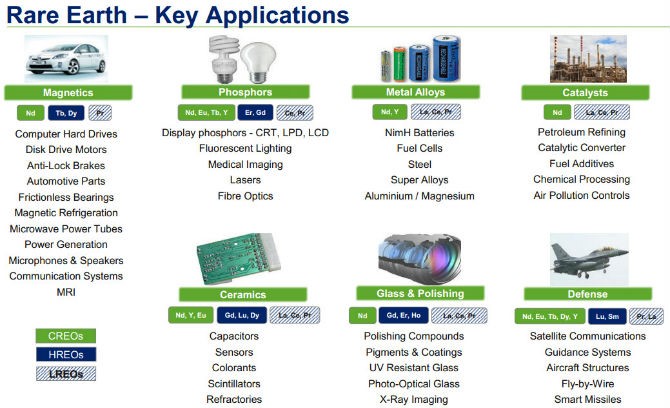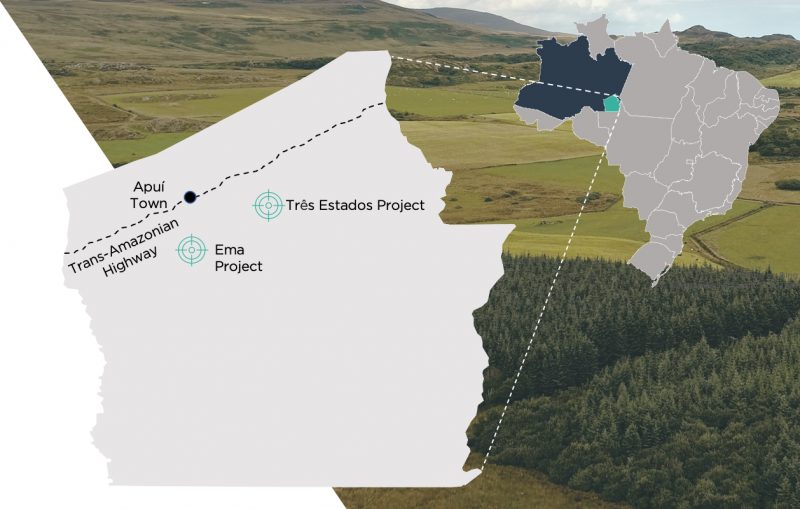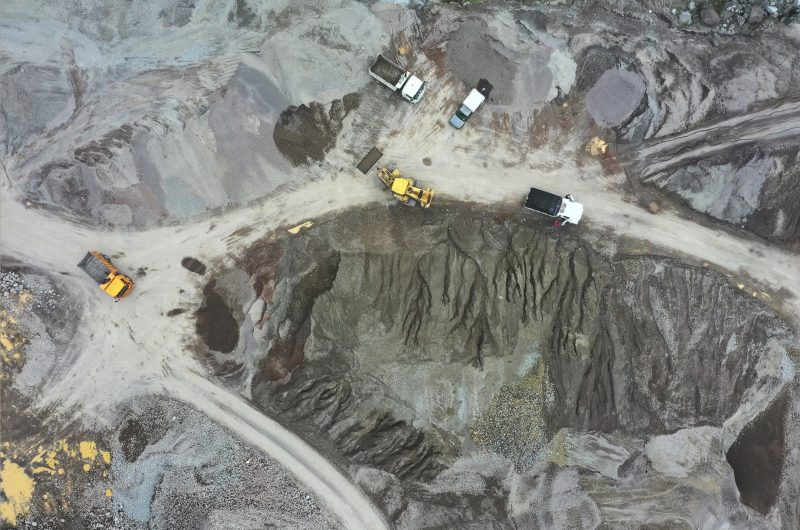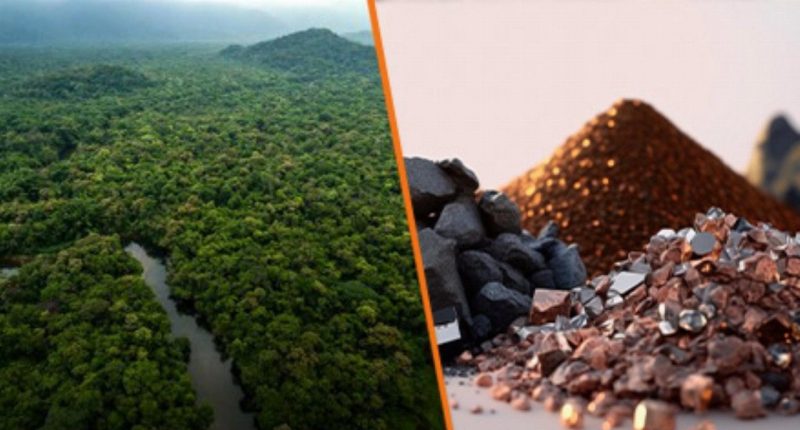Brazil has emerged as a major hub for rare earth elements (REE) exploration in recent years. South America is home to 12 countries, and Brazil alone holds the world’s third-largest reserves of REEs.
According to The United States Geological Survey (USGS), Brazil produced 80 tonnes of rare earth raw materials in 2022, out of a global supply of 300,000 tonnes. Nevertheless, the full potential of REEs in the region remains largely unexplored and untapped.
With the global mining industry undergoing a transformation and geopolitical tensions with China on the rise, now is an opportune time for miners from around the world to explore and establish a presence in Brazil, capitalising on its abundant REE potential.
China’s dominance
China has long held a commanding position in the global rare earth supply chain, accounting for 70 per cent of worldwide rare earth mine production in 2022.
This dominance is further underscored by China’s vast reserves, estimated at 44 million tonnes, far exceeding those of any other country. Vietnam and Russia share the second spot with 22 million tonnes, while Brazil trails closely behind with 21 million tonnes. India and Australia hold the next largest reserves, but their quantities are significantly smaller at 6.9Mt and 4.2Mt, respectively.
China’s position is further strengthened by its fully integrated rare earth supply chain, encompassing mining, processing, and manufacturing. This integrated approach allows China to control the entire value chain, ensuring a steady supply of rare earth materials for its own industries and for export.
In 2022, China’s production quota for rare earths reached 210,000 metric tonnes of rare earth oxide, demonstrating its capacity to meet global demand.
However, this dominance has also raised concerns about potential supply disruptions, particularly in times of geopolitical tension. China has previously used its rare earth dominance as a political tool, most notably during trade disputes.
The recent export restrictions on graphite, a crucial material for electric vehicle batteries, serve as a stark reminder of China’s hold on critical raw materials. To reduce reliance on China, countries and industries should invest in alternative sources, such as Brazil, to strengthen supply chains and enhance resilience.
Despite the name, REEs aren’t that rare

Despite their name, REEs are actually incredibly common and can be found all over the world. Even our backyards can contain REEs. However, their unique geochemical characteristics mean REEs are typically dispersed and not often found in concentrated deposits, making them difficult to mine, extract, and recycle.
REEs are a group of seventeen metallic elements that have exceptional magnetic and conductive properties. These properties make them critical components for more than 200 products across a wide range of applications, including high-tech consumer products such as smartphones, laptops, electric vehicles (EVs), wind turbines, and medical devices. Without these elements, modern technology wouldn’t be what it is today.
REEs are essential components of a wide range of modern technologies. As demand for these technologies continues to grow, it is important to ensure that we have a reliable supply of REEs. This will require continued investment in the exploration, mining, and processing of REEs, as well as the development of technologies for recycling REEs.
However, due to the difficulties in extracting the metal from the ore, rare is a fitting term. These elements rarely exist in pure form; they are usually found within other minerals, making them costly to mine. Ironically, the reasons for extracting them are plentiful.
Growing demand in South America
In recent years, global demand for REEs has risen due to the rise of emerging economies and increasing demand for clean energy technologies.
This demand is particularly evident in South America, particularly in the Brazilian states of Goiás, Minas Gerais, and Bahia. However, despite this surge in demand, financing for REE exploration and development in the region has not kept pace.
According to the International Energy Agency (IEA), only seven per cent of global exploration budgets for nickel and REEs have been allocated to South America, which currently accounts for just 0.2 per cent of global REE production. This lack of investment is concerning given the region’s vast REE reserves and its potential to become a major player in the global REE supply chain.
Brazil produced only 80 tonnes of REEs in 2022, a significant decline from the previous year’s output of 500 tonnes. This low production level is largely due to the lack of investment in REE projects in the country.
Based on data from the MI database, there are a total of 132 REE projects located in North and South America. Of these, 37 projects are in advanced stages of exploration or nearing production. However, the majority of the projects (51 per cent) are still in the exploration phase, with only 18 per cent having advanced to the economic study or permitting, construction, or production stages.

“There is no denying the incredible potential of the region, from its geological wealth to the strength of its national mining ecosystems built on centuries of mining history,” Leading management consultancy Embellie Advisory Co-Founder Dr Remi Piet said.
“Its geographical location also makes it an overall secure mining hub with prime access to Asian, European, and North American markets.”
While some countries in South America have progressed further than others in terms of mining infrastructure and regulatory frameworks, the region as a whole offers a wealth of untapped REE resources. This has attracted the attention of mining companies worldwide, including several Australian companies that are actively exploring opportunities in the region.
Viridis Mining and Minerals (ASX:VMM)

Exploration and development company, Viridis Mining and Minerals, has an ionic adsorption clay (IAC) rare earth element project in Minas Gerais, Brazil, with the potential to be considered “world-class”.
The company has already finalised an agreement to acquire 100 per cent interest in the rights to the Colossus rare earth project, located within the Poços de Caldas Alkaline Complex in Minas Gerais.
This initiative is a critical part of the company’s long-term strategy to establish the Colossus project as a globally significant asset. The project covers a total of 41 licenses, including two mining leases, encompassing a land area of 56 square kilometres within South America’s largest alkaline complex.
Today, the company announced a major strategic expansion to the very project, covering a further 5388 hectares (53.88 square kilometres) of licenses within Pocos de Caldas.
The new areas cover REE and Yttrium rights across 15 exploration licences and 12 exploration license applications, increasing the project’s landholding to just less than 145 square kilometres.
“This strategic expansion consolidates Viridis’ footprint within the complex, and presents the company with a large amount of additional prospects to systematically explore for ionic adsorption clay rare earth elements mineralisation into the future,” VMM Executive Chairman Agha Shahzad Pervez said.
BBX Minerals (ASX:BBX)

Perth-based BBX Minerals is strategically advancing its Ema and Três Estados projects in Apuí, Brazil, with the aim of becoming a key global supplier of REEs.
The company is utilising an eco-friendly “bioleaching” method for extraction, which has proven to be more cost-effective than traditional smelting. This approach is simpler, more economical, and requires fewer specialists for operation and maintenance.
Located near Apuí in Amazonas, both projects cover a combined area of 270.5 square kilometres and offer direct access to transportation infrastructure. They also feature a highly prospective geological landscape for artisanal mining.
In June 2023, BBX identified 14 new priority targets within the Ema and Ema East prospects for ionic rare earth elements (iREEs). These targets are considered prospective for producing rare earth elements with exceptional purity and value.
The Três Estados project has a mineral resource estimate of 725,230 ounces of combined platinum, palladium, iridium, rhodium, and gold. In June 2023, BBX conducted a successful bioleaching pilot plant test at Três Estados, demonstrating a substantial increase in gold and palladium recovery compared to untreated samples. This test was conducted in partnership with EcoBiome, a leading bioleaching technology provider.
BBX believes that the Apuí region may hold one of the largest rare earth element concentrations in South America due to its favourable geophysical characteristics. The company’s strategic focus on environmentally friendly and cost-effective extraction methods, coupled with its promising exploration results, positions it well to become a major REE producer in the region.
Meteoric Resources (MEI)

In March this year, Meteoric Resources inked an agreement to acquire a tier-one ionic clay REE project in the Minas Gerais State of Brazil, Calderia project.
In August, the company signed a non-binding cooperation agreement with the State Economic Department and the State Government of Minas Gerais to advance the project.
This agreement aims to facilitate the progression of the Caldeira Project and explore additional downstream processing possibilities leading to magnet production.
“The cooperation agreement and formal appointment of Invest Minas and Alger will provide significant assistance in obtaining government approvals for the Caldeira project, the world’s highest-grade ionic clay REE deposit,” MEI Executive Chair Dr Andrew Tunks said.
Meteoric Resources is also actively considering acquiring copper, lithium, and REE resources in South America as part of its strategic expansion into metals crucial for the global energy transition. The company highlights Brazil, Chile, and Argentina as the most promising regions for potential deals and exploration.
South American mining history

Historically, mining has accounted for a significant portion of foreign direct investment inflow into South America, ranging from 13 to 19 per cent. While the mining sector offers substantial potential for economic development, it also carries risks of environmental degradation and adverse effects on local communities.
The emergence of new governments in the region reflects a growing commitment to implementing reforms, particularly in the crafting of mining policies designed to address the complexities associated with the mining and exploration sector.
South American countries are working on more efficient regulations and policies to create a favourable environment for investors. These reforms aim to open up underexplored areas, presenting opportunities for global investors to engage in new discoveries and valuable mining projects.
At the same time, mining companies looking to further explore the region need to take steps to minimise conflict over their assets by reducing water use, adhering to international social and environmental practices, and engaging in consultation with local communities.
Despite these challenges, South America has played a pivotal role for quite some time in meeting the global demand for critical minerals such as copper, lithium, cobalt, and nickel.
The region also holds substantial prospects in graphite, nickel, manganese, and rare earth elements, with Brazil alone containing nearly one-fifth of the world’s reserves for each of these resources.
At the recent International Mining and Resource Conference (IMARC) held in Brisbane in June, Dr Remi Piet spoke on the current mining environment in South America.
Dr Piet turned particular attention toward regional misconceptions that may disadvantage prospective mining investors hunting for the next big thing.
“Latin America is emerging from a history plagued with political instability to become a key investment destination. While the region has actually enjoyed a positive track record of regulation … this is not always reflected in the media,” he said.
“To the untrained eye, events such as the demonstrations in Peru, yet another election in Ecuador, or the occasional erratic decisions of charismatic left-wing leaders … might suggest it is unwise to dedicate investment resources to Latin America.”
Dr Piet summarised the region as one of structural evolution with a resilient mining sector and a capacity to re-emerge as a sustainable mining leader in the 2030s.
“There is no denying the incredible potential of the region, from its geological wealth (in particular in copper, gold, silver, zinc and now battery metals) to the strength of its national mining ecosystems built on centuries of mining history.”.
This is just one example of a South American country undergoing reforms for progressive change within the mining industry. This will increasingly become more apparent throughout the region as it becomes more acknowledged that environmental standards are not only crucial for protecting the environment but also for gaining and keeping the support of local communities.
South America’s vast, underexplored rare earth potential, combined with the urgency to diversify the supply chain away from China, presents a prime opportunity for other countries and companies to invest in the region.
With the region’s geological wealth and its commitment to modernising regulations for investors, South America has the potential to become a significant player in the global rare earth market.








